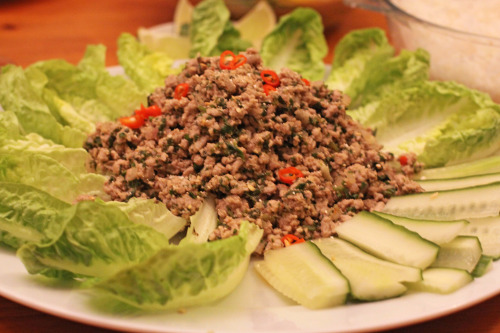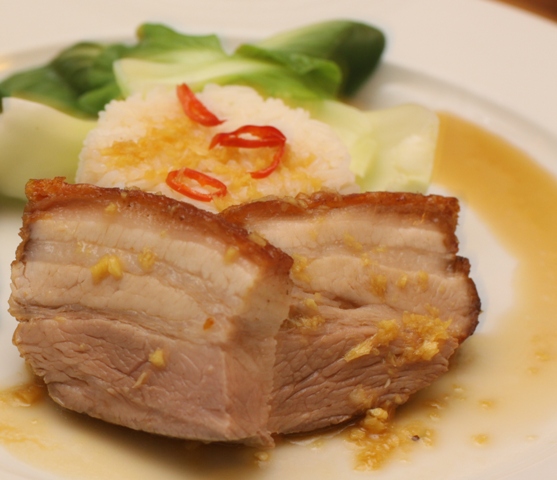Larbilicious
 Monday, February 7, 2011 at 10:00PM
Monday, February 7, 2011 at 10:00PM 
One of the nice things about writing this blog is that I find out a lot of interesting things in the process. I have been making larb for years – it is a staple canapé for our annual Christmas Eve party and Dad entrusted me with it early on because it is extremely easy. I have always thought it was ubiquitous in Thai cuisine, just as it is in Sydney’s Thai restaurants, but I have just discovered that it is actually a regional dish from Isan, in north east Thailand, and probably originated further afield. In his book, Thai Food, David Thompson shares some theories on the salad’s historic origins:
A larp is an ancient salad. Some argue that it has the same origins as steak tartare, raw meat eaten with onions. The merchants of this part of Asia, the Haw, may have helped to spread the dish from the south-west of China and now, throughout northern Thailand, there are adaptations of this style of salad.
Wikipedia suggests that larb may have come to Thailand from Laos:
Laotian cuisine has strongly influenced the neighboring cuisine of Northeastern Thailand (Isan) ... The most famous Laotian dish is Larb ... a spicy mixture of marinated meat and/or fish that is sometimes raw (prepared like ceviche) with a variable combination of herbs, greens, and spices.
 Vix |
Vix |  2 Comments |
2 Comments | 
